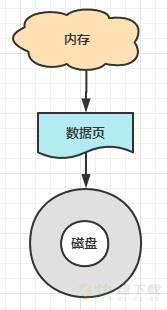一个经典的mysql索引问题
今天分享一个线上的经典MySQL索引问题。
01背景介绍
今天在线上运维过程中,遇到了一个MySQL的经典索引问题。线上的表结构不方便展示,我模拟了一个表结构用于说明问题:
CREATE TABLE `test_index` ( `id` int(11) NOT NULL AUTO_INCREMENT, `name` varchar(10) DEFAULT NULL, `age` int(11) DEFAULT NULL, PRIMARY KEY (`id`), KEY `idx_age` (`age`) ) ENGINE=InnoDB AUTO_INCREMENT=100001 DEFAULT CHARSET=utf8mb4
上面的表结构中,有两个索引:一个是id,也是自增主键,另外一个是idx_age,它是一个普通二级索引。
表里面插入了从1~10w的数据,形如下面这样:
+----+------+------+ | id | name | age | +----+------+------+ | 1 | 1 | 1 | | 2 | 2 | 2 | | 3 | 3 | 3 | | 4 | 4 | 4 | | 5 | 5 | 5 | | 6 | 6 | 6 | | 7 | 7 | 7 | | 8 | 8 | 8 | | 9 | 9 | 9 | | 10 | 10 | 10 | +----+------+------+ 10 rows in set (0.01 sec)
下面我们看两个查询的SQL:
SQL 1:
select * from test_index where age>0 and age<20000 order by age ;
SQL 2:
select * from test_index where age>0 and age<20000 order by age limit ?;
其中,?代表一个具体的数字。
那么对于这两个SQL,MySQL会采用何种执行计划呢?
02执行计划分析 执行计划分析如下:
MySQL >explain select * from test_index where age>0 and age<20000 order by age ; +----+-------------+------------+------------+------+---------------+------+---------+------+--------+----------+-----------------------------+ | id | select_type | table | partitions | type | possible_keys | key | key_len | ref | rows | filtered | Extra | +----+-------------+------------+------------+------+---------------+------+---------+------+--------+----------+-----------------------------+ | 1 | SIMPLE | test_index | NULL | ALL | idx_age | NULL | NULL | NULL | 100139 | 37.47 | Using where; Using filesort | +----+-------------+------------+------------+------+---------------+------+---------+------+--------+----------+-----------------------------+ 1 row in set, 1 warning (0.00 sec) MySQL >explain select * from test_index where age>0 and age<20000 order by age limit 100,200; +----+-------------+------------+------------+-------+---------------+---------+---------+------+-------+----------+-----------------------+ | id | select_type | table | partitions | type | possible_keys | key | key_len | ref | rows | filtered | Extra | +----+-------------+------------+------------+-------+---------------+---------+---------+------+-------+----------+-----------------------+ | 1 | SIMPLE | test_index | NULL | range | idx_age | idx_age | 5 | NULL | 37524 | 100.00 | Using index condition | +----+-------------+------------+------------+-------+---------------+---------+---------+------+-------+----------+-----------------------+ 1 row in set, 1 warning (0.00 sec)
可以看到:
第一个SQL,关键字标红的是:all,using filesort
第二个SQL,关键字表用的是:range,idx_age
我们表的age字段上有普通索引,本身就是根据age字段进行排序的。但是我们的SQL语句中,除了要访问age,还需要访问id列和name列,所以,在age这个索引上,不能获取所有的数据。
那么,正常情况下,这个SQL的可能的执行方法有以下两种:
方法1、扫描age字段,先找到符合条件的age值,再根据age字段的索引,获得对应的id列值,然后"回表",去聚集索引(也就是主键id)上去查找对应的name列的值
方法2、直接在聚集索引id上面查找满足age字段的值,然后再利用文件排序。
从实际的情况来看,
SQL 1:
select * from test_index where age>0 and age<20000 order by age ;
采用的是上述方法2
而SQL2:
select * from test_index where age>0 and age<20000 order by age limit 100,200;
采用的是上述方法1
age列上已经创建了索引,查询也是按照age来的,而且还有排序操作。为什么第2个SQL的限制条件更多,但是却能用到索引,第一个SQL的限制条件更少,却用不到索引?
真实情况是什么样子的?
我们再来看下面的对比:
MySQL >explain select * from test_index where age>0 and age<20000 order by age limit 100,200; +----+-------------+------------+------------+-------+---------------+---------+---------+------+-------+----------+-----------------------+ | id | select_type | table | partitions | type | possible_keys | key | key_len | ref | rows | filtered | Extra | +----+-------------+------------+------------+-------+---------------+---------+---------+------+-------+----------+-----------------------+ | 1 | SIMPLE | test_index | NULL | range | idx_age | idx_age | 5 | NULL | 37524 | 100.00 | Using index condition | +----+-------------+------------+------------+-------+---------------+---------+---------+------+-------+----------+-----------------------+ 1 row in set, 1 warning (0.00 sec) MySQL >explain select * from test_index where age>0 and age<20000 order by age limit 100,20000; +----+-------------+------------+------------+------+---------------+------+---------+------+--------+----------+-----------------------------+ | id | select_type | table | partitions | type | possible_keys | key | key_len | ref | rows | filtered | Extra | +----+-------------+------------+------------+------+---------------+------+---------+------+--------+----------+-----------------------------+ | 1 | SIMPLE | test_index | NULL | ALL | idx_age | NULL | NULL | NULL | 100139 | 37.47 | Using where; Using filesort | +----+-------------+------------+------------+------+---------------+------+---------+------+--------+----------+-----------------------------+ 1 row in set, 1 warning (0.00 sec)
上面的这两个SQL语句:
SQL 3:
explain select * from test_index where age>0 and age<20000 order by age limit 100,200;
SQL 4:
explain select * from test_index where age>0 and age<20000 order by age limit 100,20000;
仅仅是limit 最后面的值不一样,但是执行计划却完全不相同。
扫描行数100的,采用的方法1,先索引查询,再回表;
扫描行数19900的,采用的方法2,直接查聚集索引。
03 为什么会有这种差异呢?
MySQL优化器的逻辑是关键。
在MySQL存储引擎中,磁盘和内存通过数据页来交互,

MySQL中,采用的是基于成本的优化。通常我们说的成本,指代的是CPU成本和IO成本。
在MySQL优化器代码中有这样的设定:
1、读取一个数据页的成本是1(也就是IO成本);
2、从这个数据页中找到一个数据记录的成本可以大概表示成0.2(也就是CPU成本);
3、读取一个范围的数据记录相当于读取一个数据页的成本,也是1。
4、每条记录每次回表操作都相当于访问一个页面
当然,实际中,比这个计算方法要复杂。
MySQL中,决定一个查询究竟用哪个索引的过程,可以简单模拟成下面这样:
1、根据搜索条件,找到所有可能的索引,并逐一计算走每条索引的代价
2、计算全表扫描的代价
3、对比各种执行方案,选出成本最低的一个
全表扫描的代价=
IO代价
+CPU代价
=
所有的页面*1+
所有的记录数*0.2
索引扫描的代价=
二级索引IO代价
+二级索引CPU代价
+回表访问IO代价
+回表访问CPU代价
=
1个数据页*1
+ 所有满足条件的记录数*0.2
+ 所有满足条件的记录数*1 (每次回表都相当于访问一个页面)
+ 所有满足条件的记录数*0.2
上述案例中,我们累计有10w记录,总的页面数大约是225个,计算方法如下(先查看表的基本状况,然后利用data_length计算页面数):
MySQL >show table status like 'test_index'G
*************************** 1. row ***************************
Name: test_index
Engine: InnoDB
Version: 10
Row_format: Dynamic
Rows: 100139
Avg_row_length: 36
Data_length: 3686400
Max_data_length: 0
Index_length: 1589248
Data_free: 4194304
Auto_increment: 100001
Create_time: 2022-01-10 21:50:53
Update_time: 2022-01-10 21:57:01
Check_time: NULL
Collation: utf8mb4_general_ci
Checksum: NULL
Create_options:
Comment:
1 row in set (0.00 sec)
MySQL 5724 myadmin_common@127.0.0.1 :test 11:06:07 >select 3686400/16/1024;
+-----------------+
| 3686400/16/1024 |
+-----------------+
| 225.00000000 |
+-----------------+
1 row in set (0.00 sec)
而扫描的age范围是[0,20000], 也就是大概1/5的所有记录。
我们简单计算下这个数值:
看到这里,想必上述的问题能够回答了,对于:
SQL 1:
select * from test_index where age>0 and age<20000 order by age ;
相当于使用了limit 100000,采用的是全表扫描
而SQL2:
select * from test_index where age>0 and age<20000 order by age limit 100,200;
只扫描了100行,因此采用索引扫描的方法
总结:
当然,真正的查询代价计算方法,比上述描述更为复杂,这里是想通过这样一个特殊案例和计算方法,告诉大家:
1、不同的扫描行数,会导致不同的扫描代价。
2、不能认为限制条件少的语句更应该使用索引。
3、不能认为索引创建了就一定会用到而要通过。
4、explain是个好工具,可以对SQL语句真正的执行计划加以分析,从而给出正确的优化方案。